I was in a dormitory room at college, unpacking and wondering a little why I was there. Something attracted my attention, and I looked out two sets of glassless windows like those found in some neo-Gothic buildings. An angel or Cupid or similar figure was swinging back and forth flush to the opposite wall on a long, black, flat pieces of metal. Despite its benevolent aspect, I felt something was wrong. I sensed the figure and the motion increasing in malevolence, then I saw it aim an arrow at me discreetly, a physical impossibility given its plane and angle. I woke up as it released the string with a strong sense that I should be dead but also that I should have been able to duck the arrow. I was still frightened by the sense of evil.
Monthly Archives: August 2011
Day at Wisconsin Dells
Right after a 40-hour work week and 8-hour work day, there’s nothing like a 4-hour (plus) car trip to rejuvenate the wearied mind and senses. At the end of countless miles of mesmerizing orange-and-white barrels and tags along I90 lie Baraboo, Devil’s Lake State Park, and Wisconsin Dells. The distance, about 200 miles, is nearly the same as from my old home in Hamburg, New York, to my extended family in the Altoona, Pennsylvania area. Forty years ago, with breaks for a meal and to collect mountain spring water before it became too polluted to drink, the Altoona trip took an interminable five hours. I remember well my back seat plaint of “Are we there yet?” and resisted the strong temptation to resurrect it, especially as Google Maps helpfully tracked the apparent slowness of our progress north and west, and my sciatic nerve sent searing pain down my right leg to make sure I knew it wasn’t happy.
International Crane Foundation
After a short but intense rest and a soak in a whirlpool, I was ready for the first destination — the International Crane Foundation. I knew about the ICF from my work as a docent at Lincoln Park Zoo, but somehow I’d forgotten about it. Right now, the main road leading to the ICF is closed for repairs, so we went in via County Road A. Even while getting out of the car, I noticed a number of eerie calls that aren’t in the usual repertoire of the wildlife and domestic stock typical of farm country. As we wandered and listened to some of their vocalizations, I realized how effective they could be if used in an alien invasion film.
Many of the cranes were in the middles of their enclosures, alert but not concerned about their human admirers. The Siberian crane pair, however, was at the very back, where we couldn’t get a good look at them. After a few minutes, though, they’d had a good look at us and didn’t like what they saw. First the male, followed by the female, approached us stiffly and threateningly, every posture, movement, and sound expressing displeasure. The woman in the visitors center had told us cranes are territorial and aggressive and had asked us not to intrude on their space with so much as a camera lens. We didn’t have to. We got the full show by standing quietly and behaving. After they came to the fence and put on their threat show, they remained wary but had lost the intensity of their interest.
The showcase habitat features the endangered whooping crane, whose plight I recall from childhood when only a handful remained. On one side of a pavilion, you can relax in the shade and watch a 20-minute video about them and the use of ultralights to train young birds in the ways of migration. On the other, a roomy seating area overlooks a wetlands where a pair was foraging in the water. While there is no obvious barrier, a guide said there’s a drop-off that the cranes know about.
Unlike their Siberian cousins, the whooping cranes seemed unconcerned about either us or the group on the official tour that had caught up with, then bypassed us. At first hidden behind the grasses and reeds, they waded out into the open water, approaching the seating area at times, then wandering back behind the grasses, all very nonchalantly.
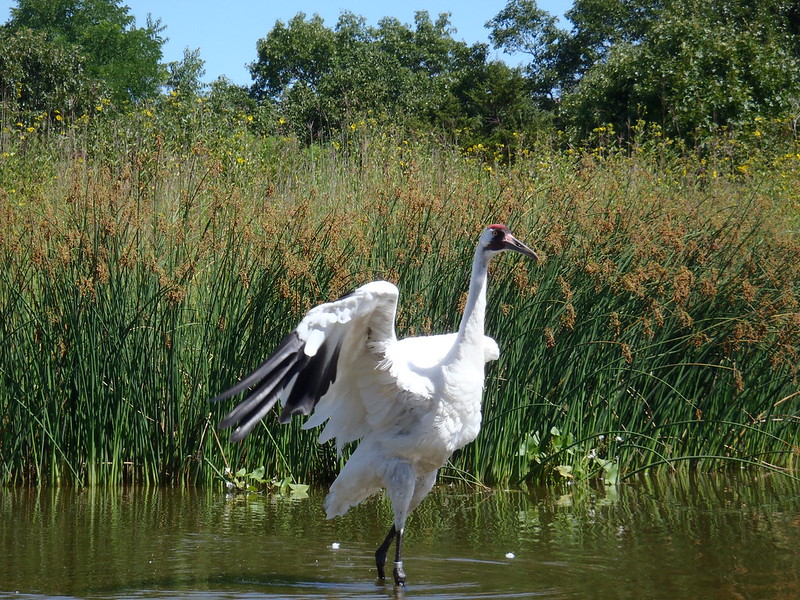
at International Crane Foundation, Baraboo, Wisconsin
I lost track of how many of the 15 crane species we saw, although it was most of them. The crane enclosures are distributed along trails bordered by a messy array of wildflowers (or weeds, if you prefer your flowers bred, hybridized, and given a cute name followed by a registration mark). Bees, butterflies, and others couldn’t get enough of what I think is gayfeather. They remind me of how much I would love to have a butterfly garden.
It was almost one o’clock when we left. The day had dawned cloudy and rainy, but by the time we’d arrived at ICF, the rain had stopped, the clouds had cleared, and the sun had made its appearance. In less than an hour, the day had transformed itself from disappointing and unpromising to perfect.
Perfect weather for a Duck. An Original Wisconsin Duck.
Original Wisconsin Duck adventure
Call me sheltered, but I’d never heard of Ducks as either amphibious military machines or tourist attraction, but they’re part of the draw to Wisconsin Dells. I didn’t have much time to read about them and didn’t know what to expect.
On the way to the Original Wisconsin Ducks, I pointed out a young man sitting on a chair next to the highway, seemingly doing nothing more than getting a tan in an especially noisy, barren spot. I wondered that he couldn’t find something better to do and a better place to do it. It turns out he was working. More about that in a bit.
Also by the roadside, we noticed signs indicating one-way Duck trail — and soon spotted an actual Duck lumbering down the trail and stopping to wait to cross the highway. That was my first glance of a Duck and how they operate. It wasn’t long before we found its home base.
Each Duck seats 20. When one fills up and drives off, another takes its place. We were near the head of the line when an empty Duck arrived. The few people ahead of us conservatively sat in the middle seats, perhaps afraid of getting wet, but I pushed J. to the front right-hand seat. From here we could see the Duck’s dashboard, with exposed crossed wiring. The war industry had no time or use for aesthetics or niceties. We could also see a control for bilge water. That, the life vests overhead, and the overall shape of the Duck were the only indications from inside (on board?) of the vehicle’s amphibious nature.
Time to board! I’d told J. driving (piloting?) a Duck could be the perfect retirement career for him, but it looked like fairly hard work to manipulate all of the mechanics while trying to elicit laughter for a series of corny jokes. We learned later that Duck drivers are college students who undergo six weeks of training. No Duck for J.
Into the dells we went, including Fern Dell, where the already pleasant temperature dropped several degrees. The combination of rocks and trapped moisture on which the ferns thrive acts like a giant air conditioner. With the play of the sun and shadow, the rocks, the lush green of the trees and ferns, and the brisk air, I thought I was in heaven — except, of course, for the roar of the Duck’s engine, which kept me grounded. So to speak.
With a splash and spray that made me happy I’d steered J. to the front seat, the Duck entered the Wisconsin River with its amazing sandstone bluffs. With the woods, water, and bluffs, I could be happy living here, I thought, even as bigger, faster boats jetted by and set the Duck to rocking.
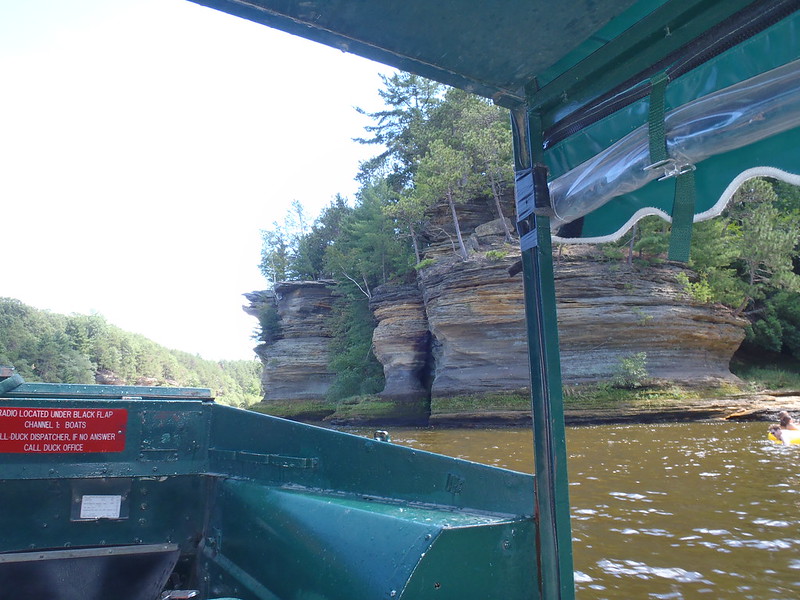
Between corny jokes, our driver/helmsman pointed out where in 2008 heavy rains had raised the level of Lake Delton, causing it to rise and break through a weak spot and to empty into the river, taking several houses with it. I remembered seeing video and the concern about what was to be done and whether the area could recover. Lake Delton refilled quickly and on this calm day little resembling the raging torrent of rushing, roiling water in the video. The bank opposite the breach shows how high the river rose when all that lake water suddenly poured into it; the earth looks like it was hit with force and churned quite high above our heads. For the observers, it must have been both a frightening and an awesome experience (in the true sense of that overused expression).
After a leisurely cruise on the river, the Duck clambered over a sand bar into Dell Creek. Next we entered Lake Delton, which was full of vacationers, tourists, and locals. The dire predictions didn’t come true, and people like us continue to pour in and pay to enjoy the river, the lake, and the dells. I often wonder about the many situations that seem bad in the present, but worked out okay or even well in the long term. For all the gloom and doom I grew up, many things today are better or at least no worse. For example, the Great Lakes may be threatened by zebra mussel and Asian carp, but they’re cleaner than they were when I was a child wading among clumps of slimy algae at Hamburg Beach. And, we’re making the effort to save species like the whooping crane rather than let them follow their cousins the dodo and the passenger pigeon into oblivion.
Back on land, the driver stopped twice to talk to young men sitting along the Duck trail. The first proved to be the idle fellow I’d pointed out from the highway. Our driver asked him about his Barbie doll order and other fetishes and told us to wish the other guy a happy birthday. He said they earn $20 an hour for sitting around. My guess is that they’re Duck spotters, paid to coordinate the movements of the many Ducks on land. Where were these cool summer jobs thirty years ago in western New York?
On the return trip, the Duck passes through a couple of narrow gorges, Red Bird and Black Hawk, with only four inches leeway on either side. I was tempted to reach over and try to touch the rock. We also stopped to admire a few deer dining just off the trail. “They’re so lifelike, aren’t they?” our driver said. One even drooled happily. It was then someone noticed the deer had companions — up to a half dozen wild turkeys. I said something about the convenience. Our driver peered thoughtfully and said, “It’s amazing what they can do with electronics.”
Near the end of the tour, he stopped the Duck to pass out booklets and postcard packets, explaining that Duck drivers are students (sorry, J.) and that through a program they earn the money from the booklets and postcards we tourists buy from them (guilt trip!) for $2 apiece. What a deal! J. had his wallet out immediately. Someone asked where he was going to college; he answered, “Boo U.” Someone scoffed at the name, so he told us that it’s the nickname for Baraboo University — I guess the scoffer hasn’t heard of cutesy college nicknames! Someone asked a tough question: “What are you studying?” judging by his embarrassed reaction. He confessed that he hadn’t actually started college; he had just graduated from high school. As we were about to exit, I couldn’t resist asking him if he even has a driver’s license. “Yes,” he informed me, probably praying I wouldn’t pinch his cheek. “I have a commercial license.” Well, at 18 he’s at least two up on me — I’ve driven neither car nor Duck!
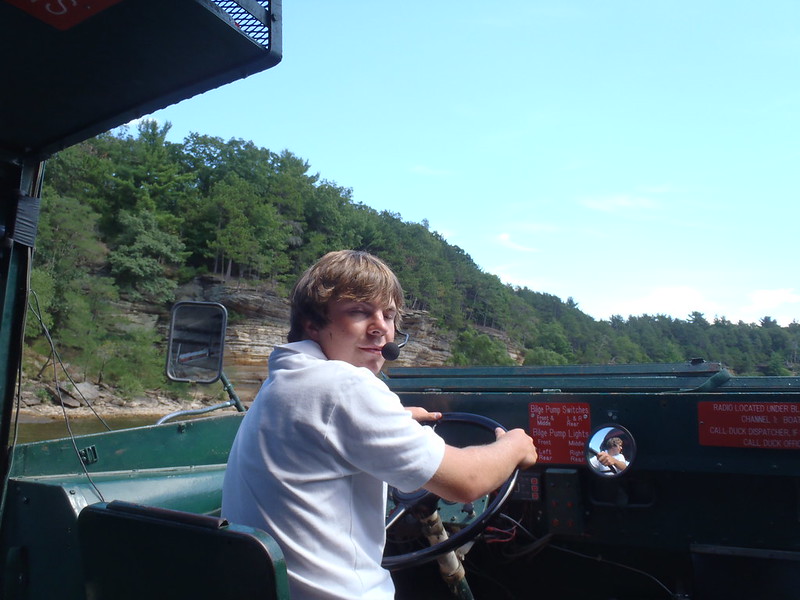
The Cheeze Factory
Our next planned destination was Devil’s Lake State Park, but as we drove through the area admiring the updated, upscale 1950s motel chic, we decided it might be a good idea to refuel. Along the main strip, the choices seemed to be limited to chains and greasy spoons. Then I spotted The Cheeze Factory, a cute house strangled by a jungle of flowers. I didn’t have a chance to look it up on Yelp or anywhere else and didn’t know what to expect. I didn’t expect an Austrian host or a vegetarian menu. It couldn’t have been more perfect. J. ordered barbecue tofu and a chocolate Coke (there’s a soda fountain), while I settled on red, white, and blue ravioli — the “blue” being bleu cheese. We ordered two cheese sandwiches (recommended by Rachel Ray) to go and topped off our mid-afternoon snack with generous slabs of princess cake — oh, the lemon butter cream frosting!
Devil’s Lake State Park
Stuffed, we made it to Devil’s Lake State Park, although it took a while to figure out where to go and where to park. I’m fairly certain we’re not ready to ascend to some of the park’s upper trails. Instead, we took the easy Tumbling Rocks Trail between the lake and a hillside covered with boulders of lavender-and-lichen Wisconsin quartzite. On the path J. spotted a millipede just like the one he’d found at Starved Rock, this time getting some photos of the little guy, whose feet clung to my hand like Velcro. Tickle tickle. Around us, even in the growing dusk under building clouds, among the picnickers, the scene took on an almost alien beauty. All I can say is that folks in this part of Wisconsin have a lot of lovely outdoor choices. I’d stay in only in the worst of weather.
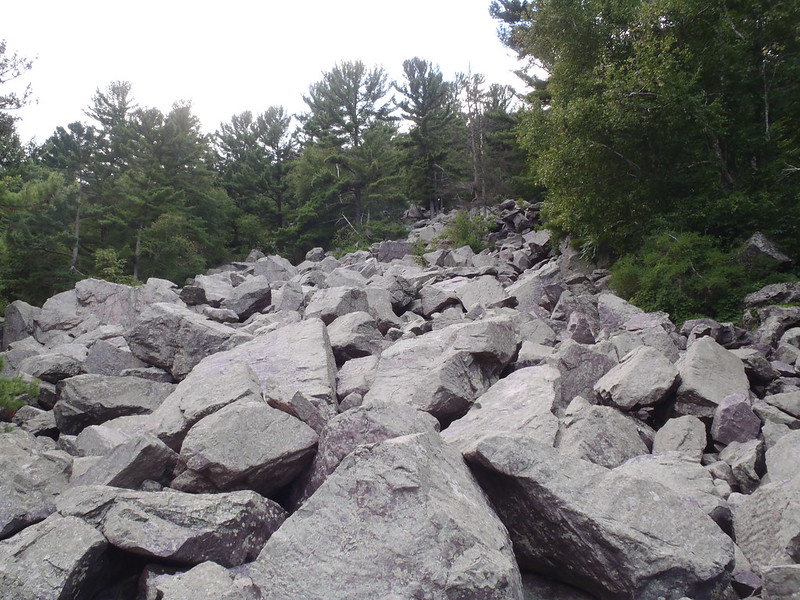
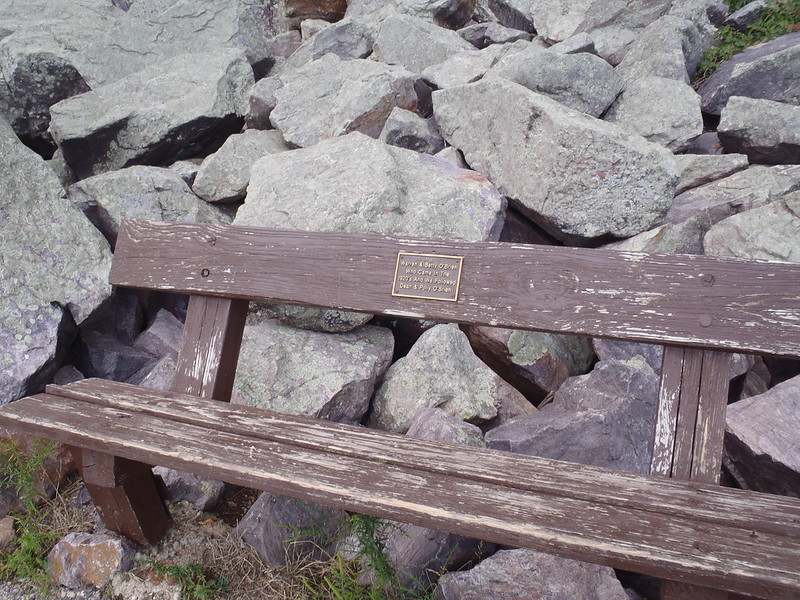
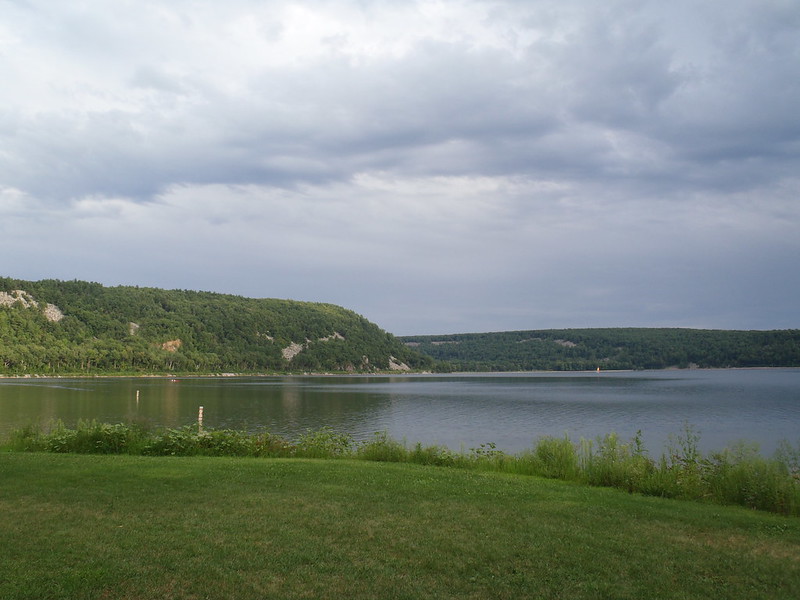
And so we set out on the long drive home, with a rainbow to guide us for about 20 to 30 minutes. In Janesville we picked up subs at a Stop n Go and dined al fresco in a pavilion under the stars at the Janesville visitors center.
And so home after a long, wonderful, and memorable day, from cranes to Ducks.
Wisconsin: Ducks, cranes, and devils
Milwaukee County Zoo, Boerner Botanical Gardens, falconry
Going to the (Milwaukee County) zoo zoo zoo
August 13th trip to Milwaukee County Zoo and Boerner Botanical Gardens.

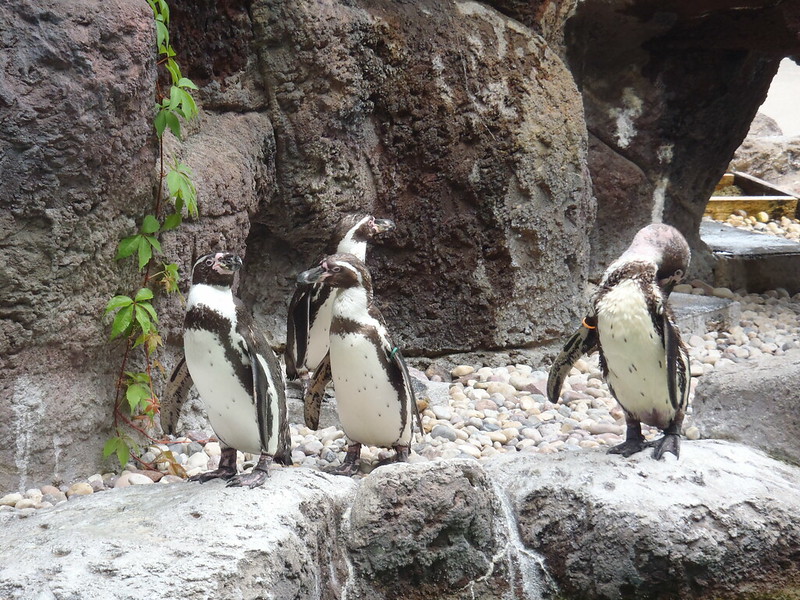
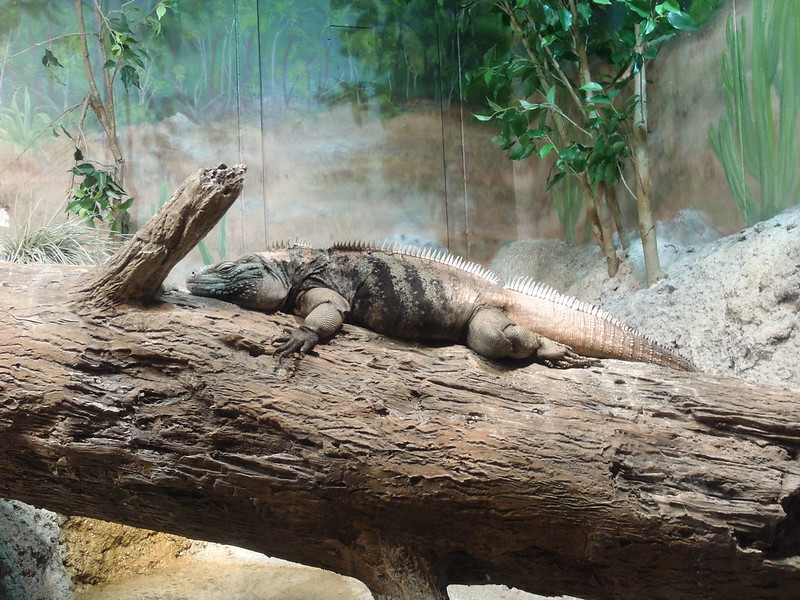
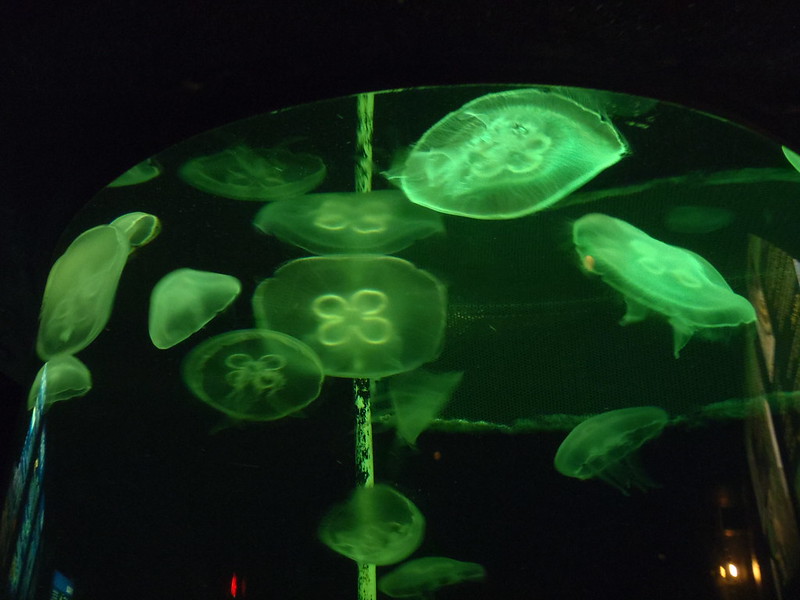
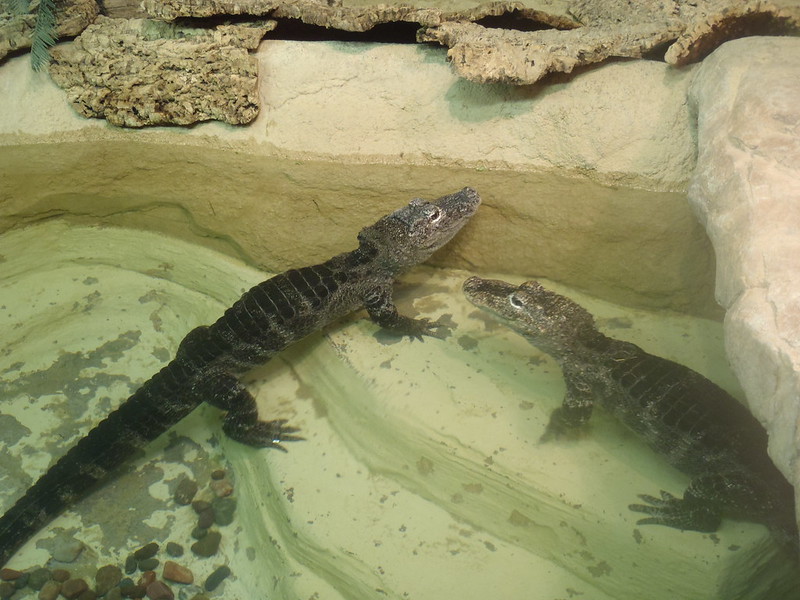

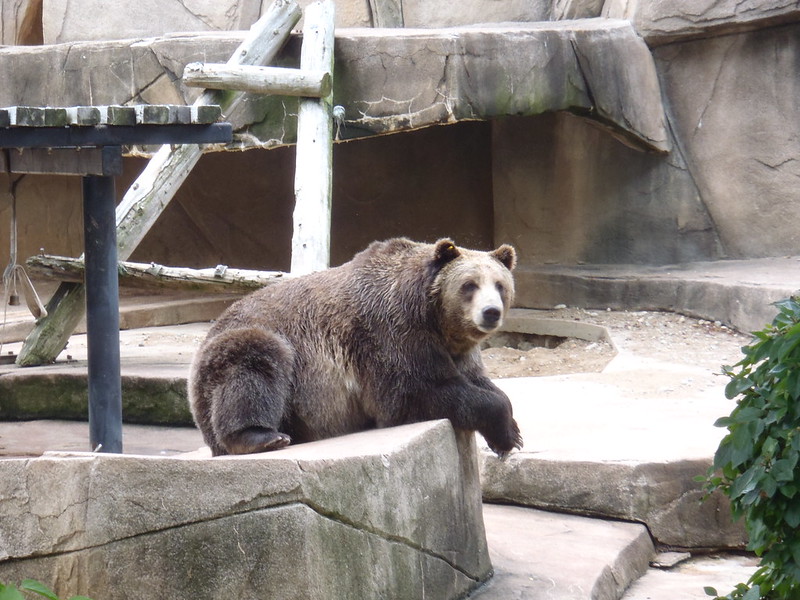
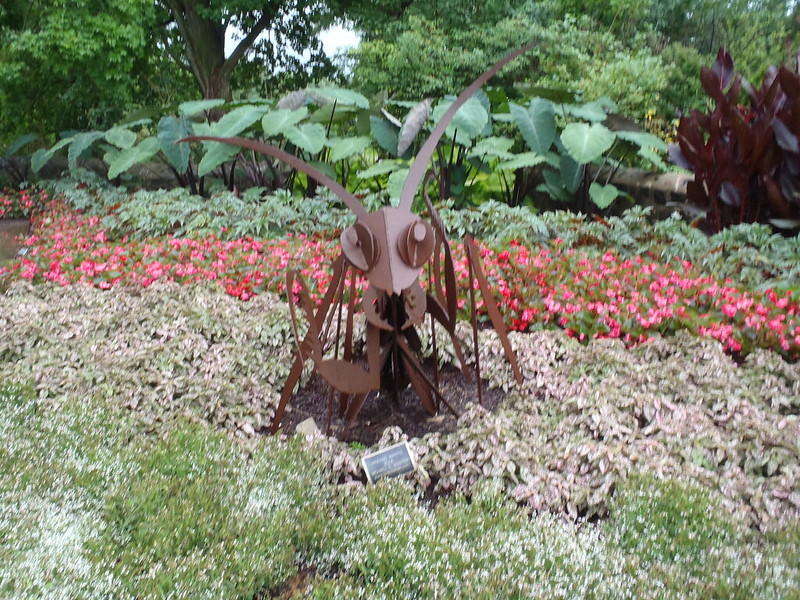

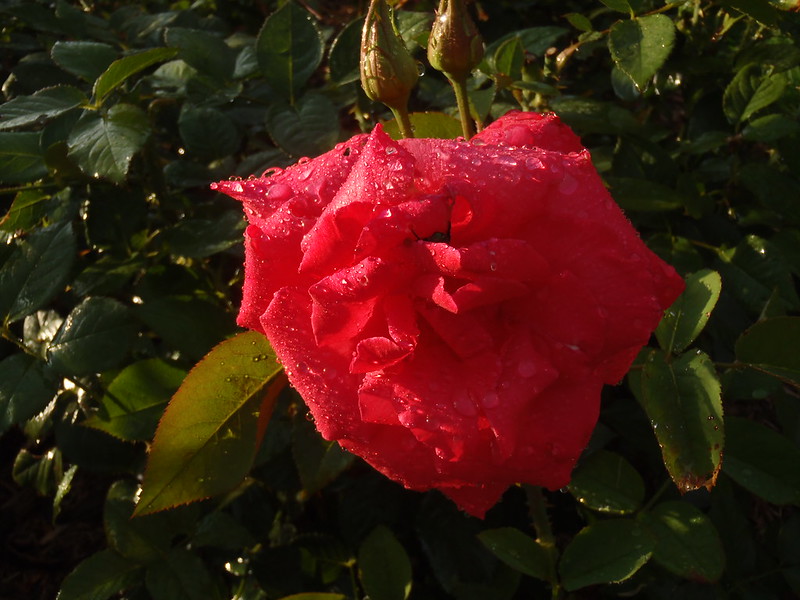
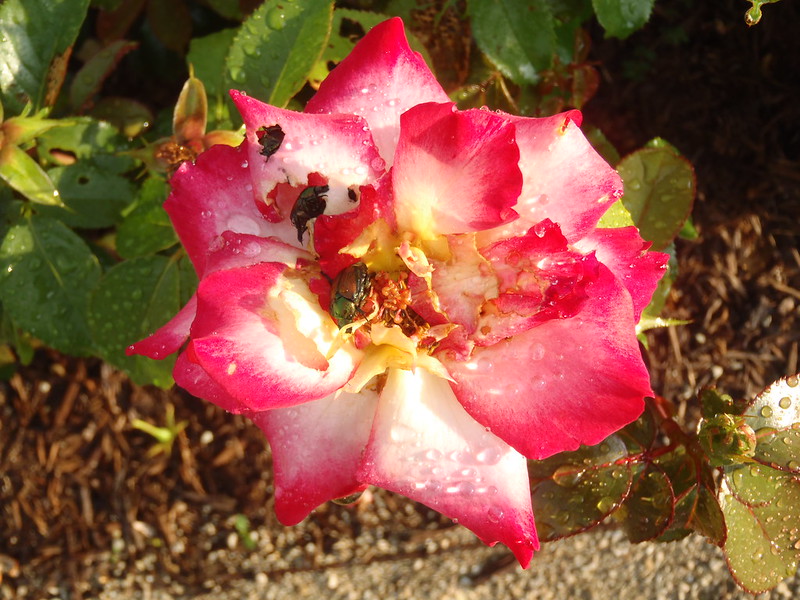
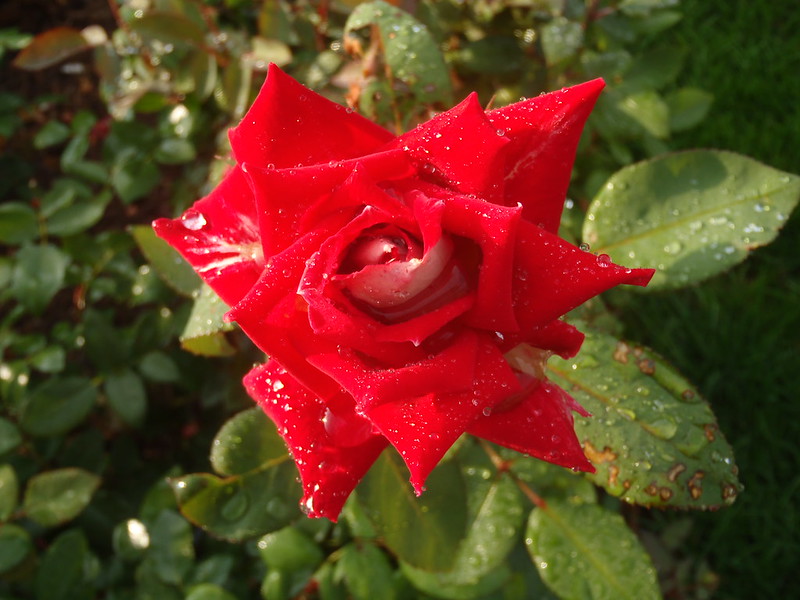
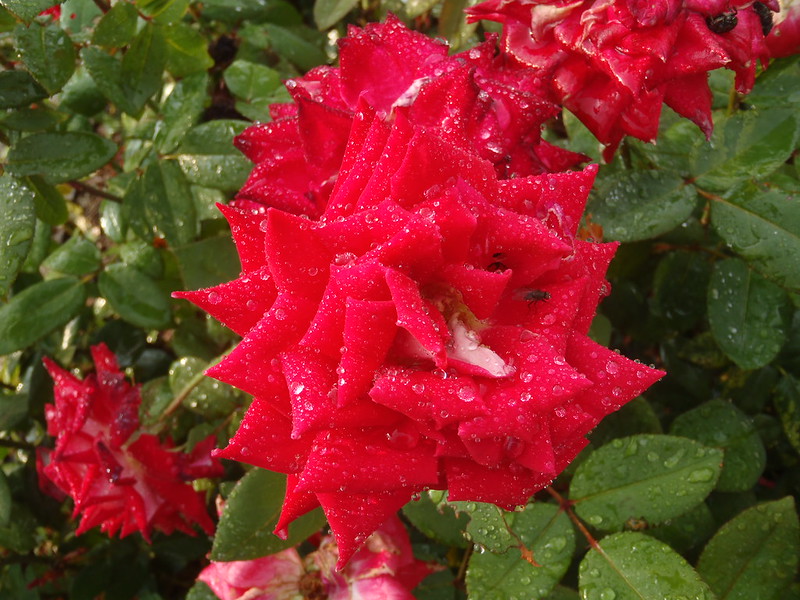
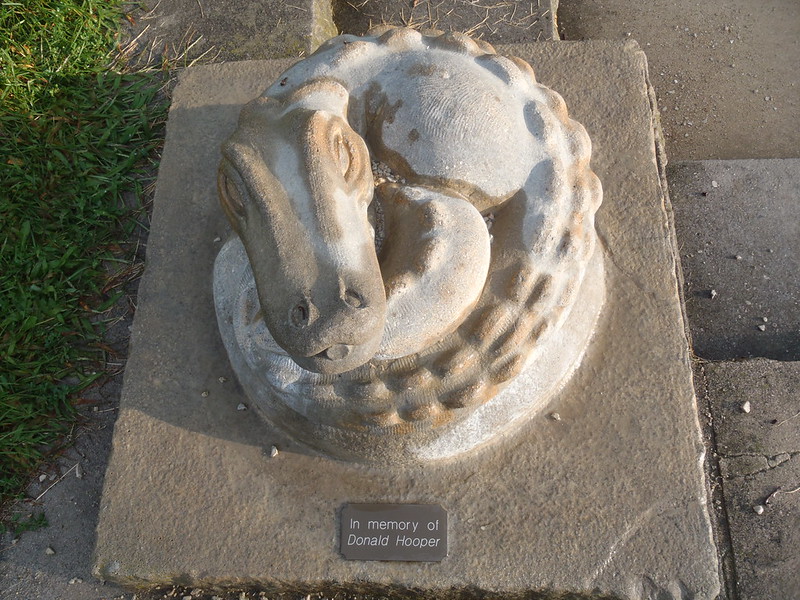

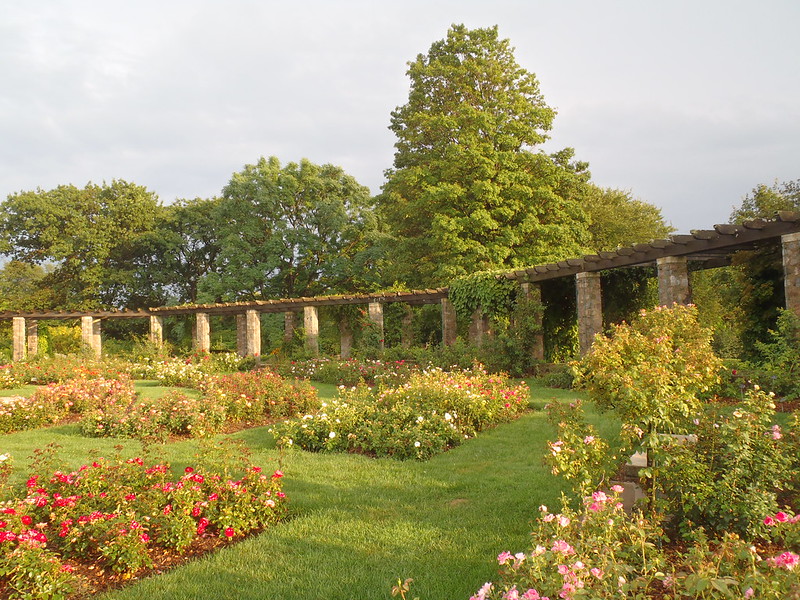

Take me to the faire
Work and weather permitting, J. and I set out for Bristol Renaissance Faire after a stop at Bonjour. This time we ended up on 41 in lieu of the Tri-State, which (1) didn’t slow us down as much as I would have thought, (2) J. found a less tense drive, and (3) didn’t cost anything. Because we were earlier than usual, we went to Apple Holler first, where a sign announced that there were a couple of days until apple picking began. A woman behind us seemed incredulous that picking would start so early, but one of the young women assured her that these are a small, tart variety (presumably for cooking). She seemed to accept that explanation somewhat grudgingly. And they call Missouri the “Show Me” state.
Both of us ate about one third of our lunches, by which time the sun seemed out to stay. At the faire, we scored the last of the front row bench seats for Adam Winrich’s fire whips show. and afterward J. picked up tips from a professional insulter while I explored the Black Pearl. We didn’t plan or do anything in particular, or at least I didn’t. J. bought memberships to Friends of the Faire, and we were given a tour of the garden. Nice group. We were told they have quite the appetites.
I decided Highland Park would be a good stopping point and discovered that it’s the home of Bluegrass (a restaurant), where I’d been been once before earlier this year.
When I opened the car door in the parking lot, I heard what sounded like hissing coming from the car. That’s one of the problems with hearing loss; the angle and distance of a sound changes its character dramatically. Even as I asked J. what the sound was, thinking it was a leaking tire, I got out and realized it was the deafening song (whine) of many, many cicadas, or dogday harvestflies. They sing in the evening here, too, but not in such quantity over such a sustained time. On facebook, Morton Arboretum had asked something like: “Cicadas — sweet sound of summer or really annoying?” Not surprisingly, the answers were divided. My guess is that your response depends on the density and volume of your resident cicada population. Hyde Park: Sweet sound of summer. Highland Park: Really annoying.
Bluegrass can be crowded and noisy, and I adore dining al fresco, so without thinking I’d opted to sit outside to enjoy the cicada chorus in the twilight. Their song wasn’t as intrusive as the din indoors. What I hadn’t considered — I don’t know why — was the army of other six-legged creatures that couldn’t leave us alone, including mosquitoes, gnats, and flies. I retrieved some spray from the car, which staved off some but not all. Poor J.
He went with barbecued bison ribs, while I ordered ribeye (rare) with bleu cheese crust. Mmmm. More leftovers.
At the Flamingo, I watched the Doctor Who episode, “The Waters of Mars.” Afterward, I realized, I needed a drink and a shower. Both made me nervous.

